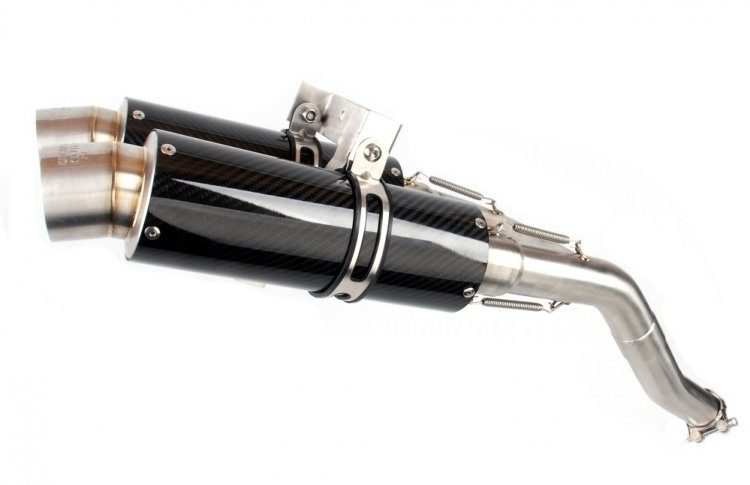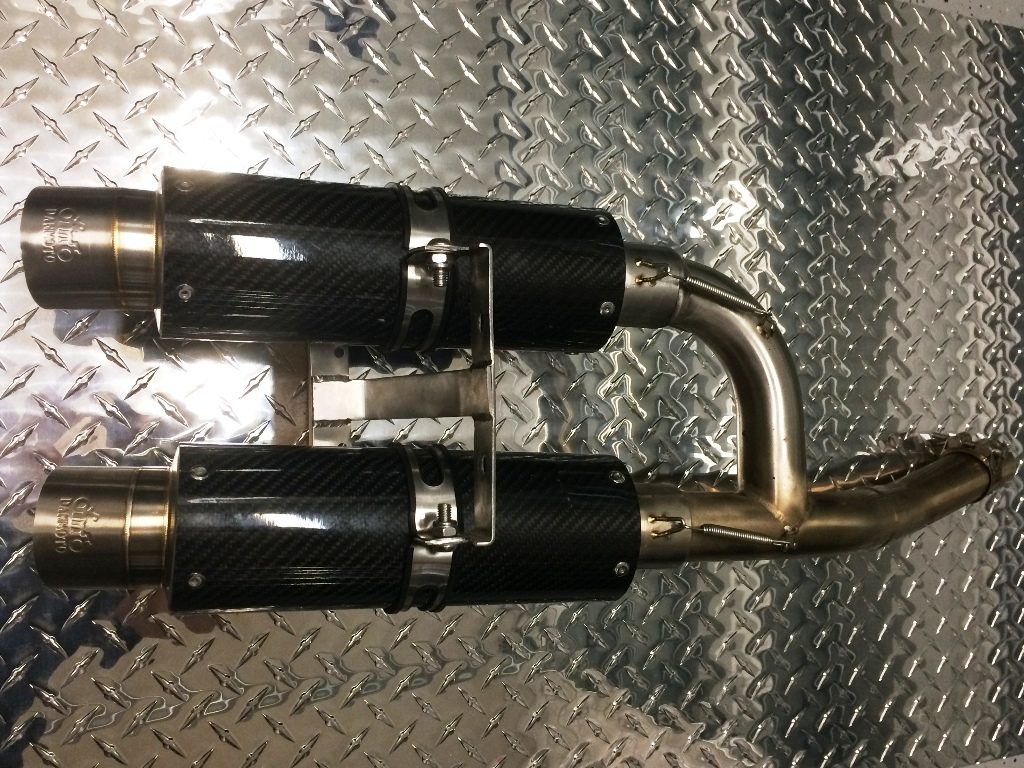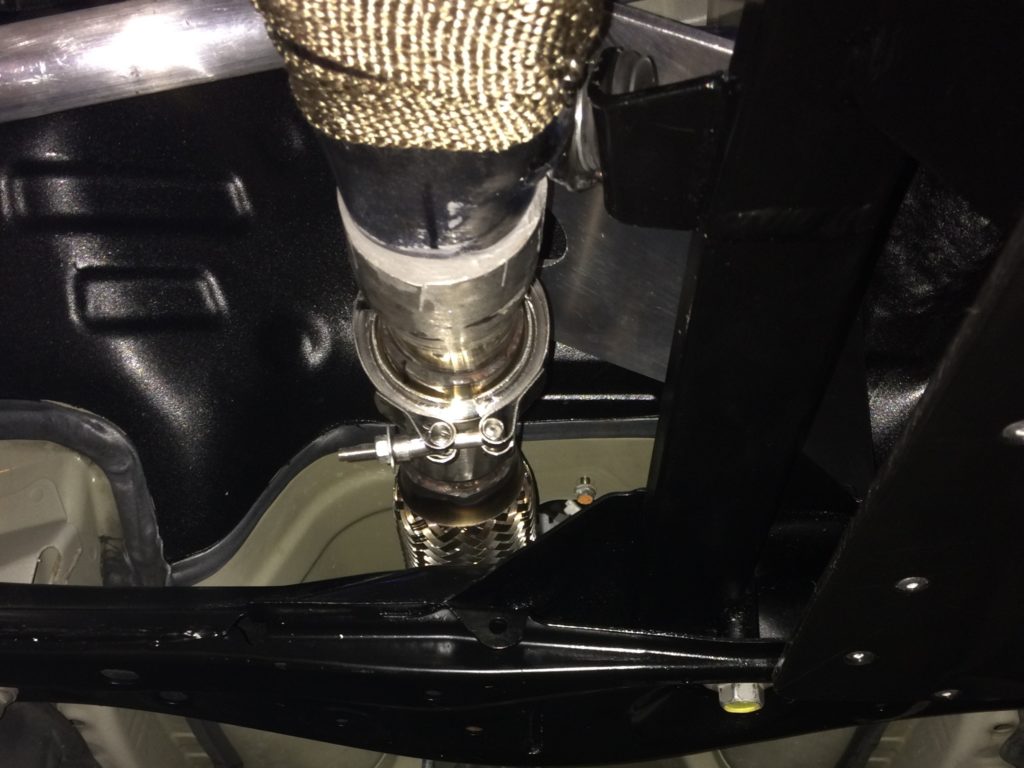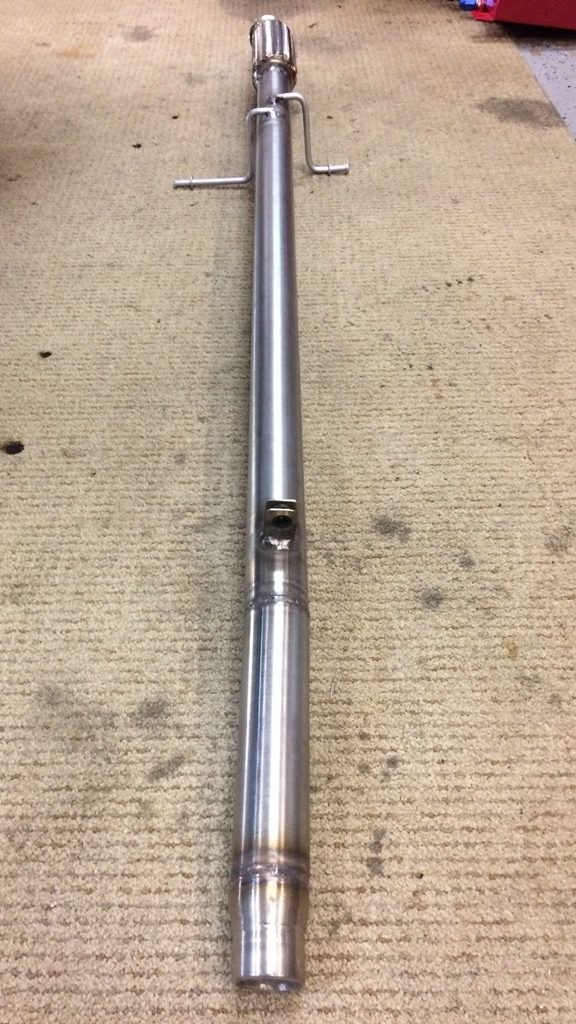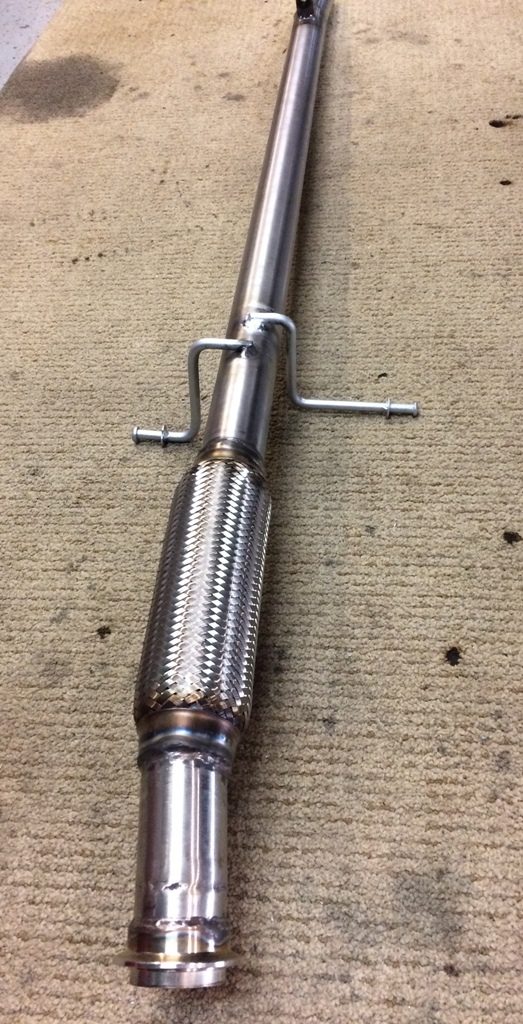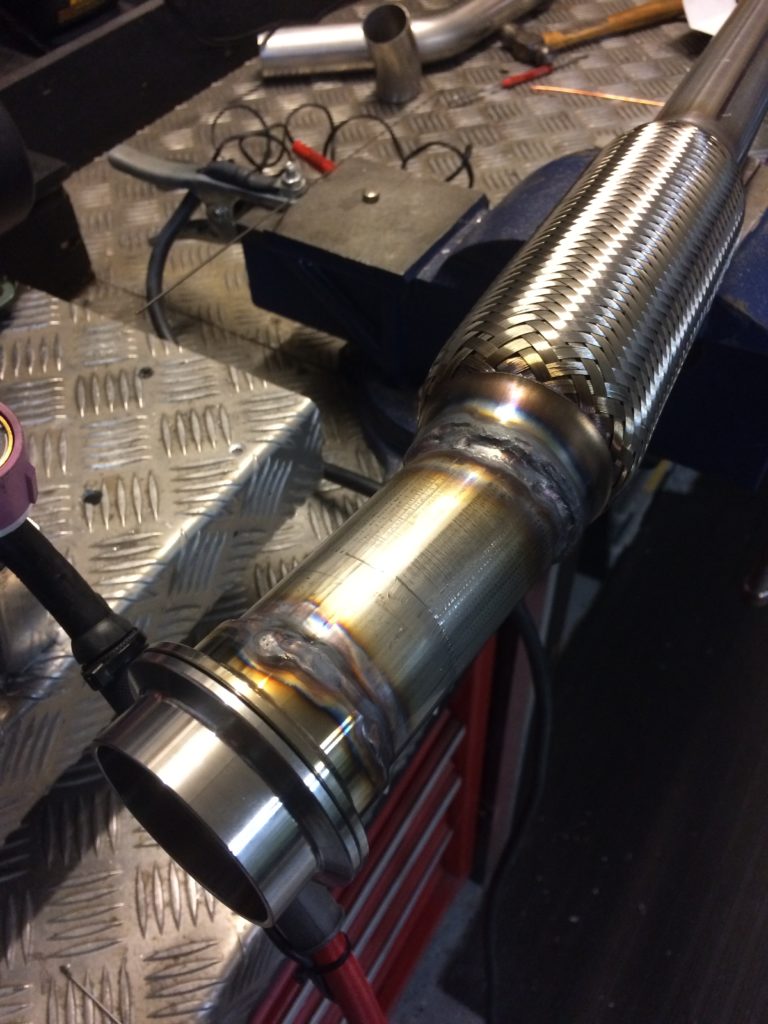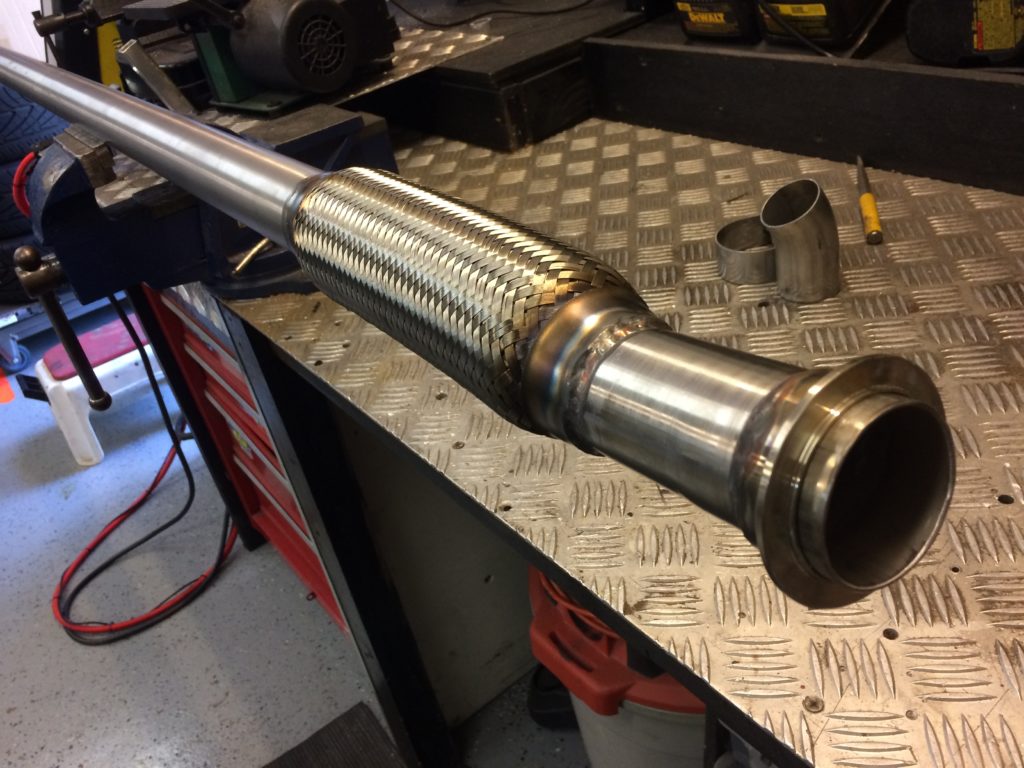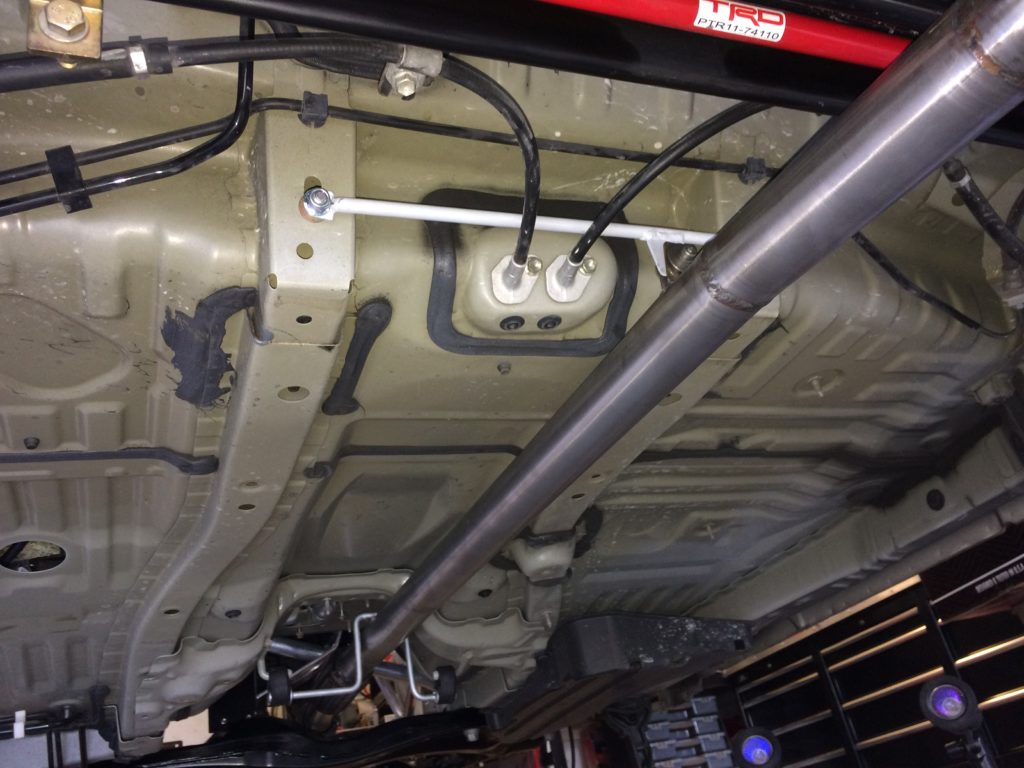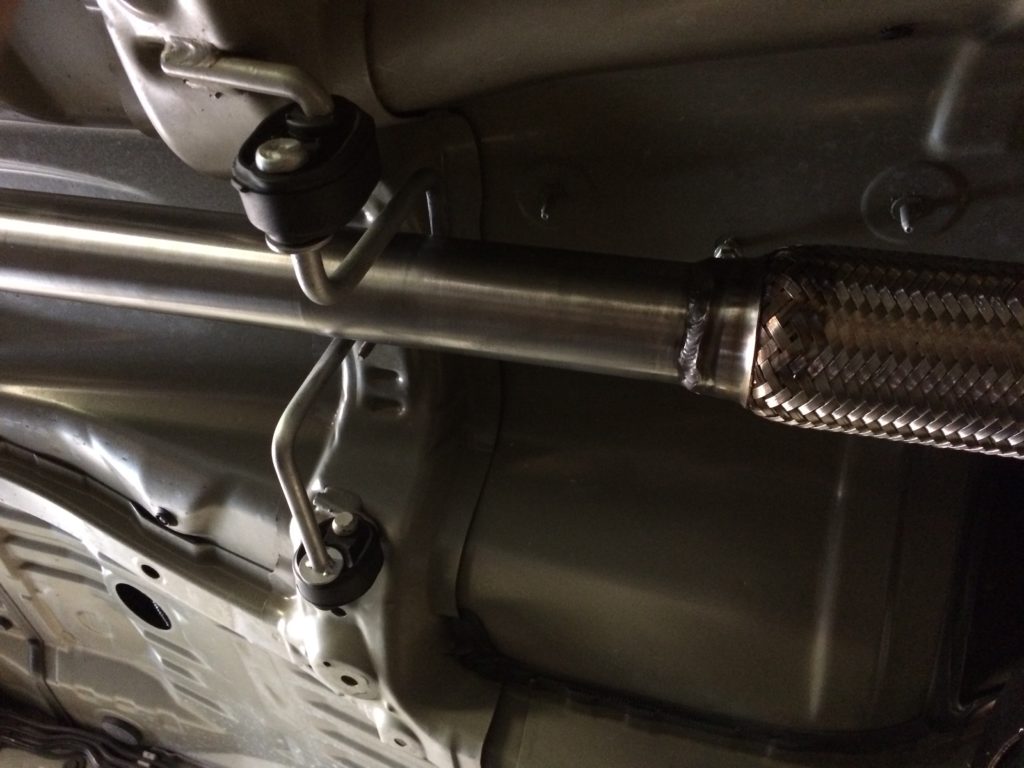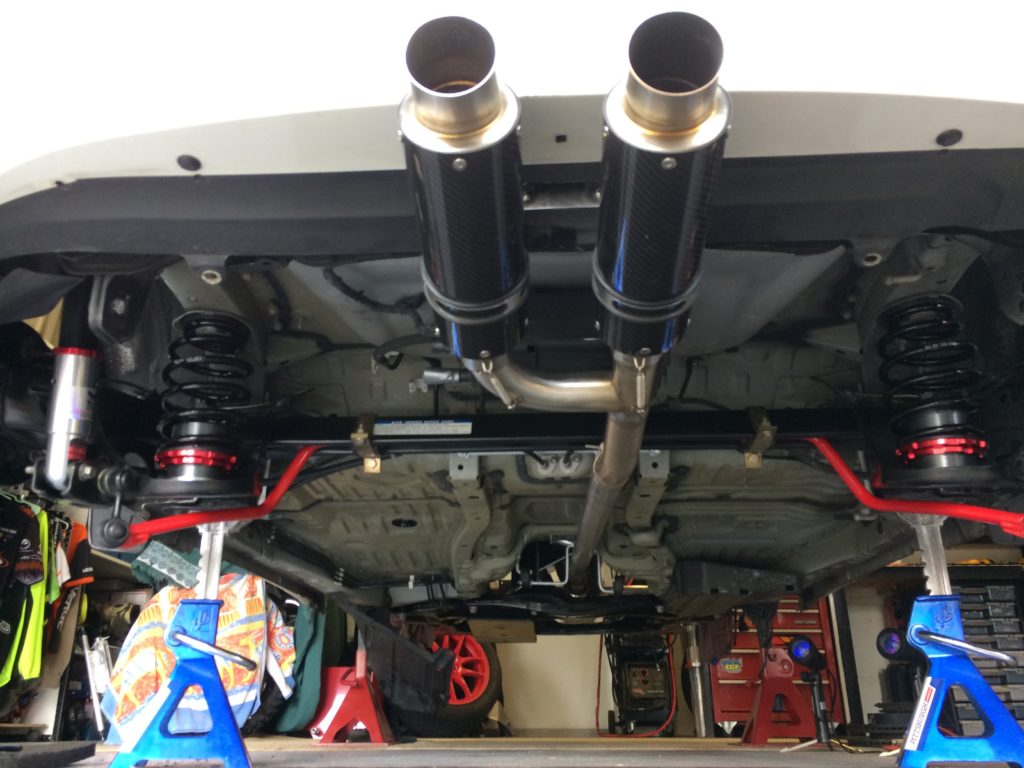Update March 2019
Link to the new Larger Version 2
Exhaust system upgrade click link:
Fabricating the one off exhaust
(Version 1)
Getting the R1 engine gases to exit the back of the car was a little challenging to say the least. The system had to be made to fit the low underside of the IQ, it needed to be made of Stainless, Titanium and Carbon fiber, and it had to look and sound as good as it worked. This is part 2 the mid pipe and end cans.
Part 1 The headers link is HERE.
This is how I made it all fit..
Finding some nice tips
I spent a couple weeks researching which tips or "End Cans" as the motorcycle world calls them would best fit my build. My decision to use these Carbon/Stainless DanMoto FZ6 full race version cans was cost and availability. They were exactly the right length and size to go under the rear of my IQ.
Perfect size and sound
DanMoto lists these as having " a deep, throaty sound you will enjoy." so after searching on line for a good price, I noticed someone local was selling a set, so I got them almost half price.
I researched plenty of other choices like Yoshimura, Acrapovic, and some full race ones from Graves Motorsport. but they were way over my budget at almost $800 and up and more for a dual pipe system.
I like your Tips
When building my race inspired IQ I needed some careful consideration not to go "too boy racer"
But these tips along with the rest of the components were really all I could use given the fact the R1 engine pushes out nearly 180HP it also revs to near 14,000 rpm so getting rid of the exhaust gases was actually a pretty big deal.
Headers Connection
The headers were modified (Link Here) to bring the joint of the mid pipe and headers centrally under the IQ. This follows the original route the OEM exhuast took. I used the original mounting brackets that were already attached to the body.
Valence installed
After modifying the rear valence was installed with sufficient clearance around the twin cans. The mesh allows some air to flow under and out of the the car.
I have a page showing the fabrication Link here
All Buttoned up
Here is the money shot of the rear cans. Showing the stock DanMoto brackets that were used to connect to the mounting bracket into the bodywork. Also shown is the Billet Aluminum finishing socket head washers that hold the rear valence and lower bodywork in place. These were purchased from eBay link here.
Start up.
The video link below showing the start up and what the new system sounds like. sorry I did not crank it up to 14,000 rpm on this run, maybe a little of that later. This was just a test to see how loud it was...
